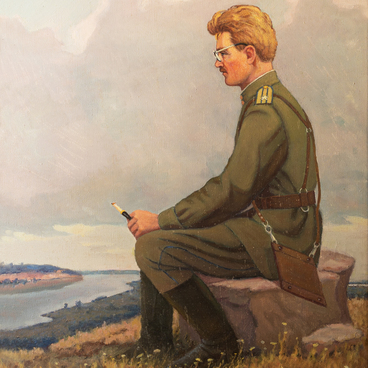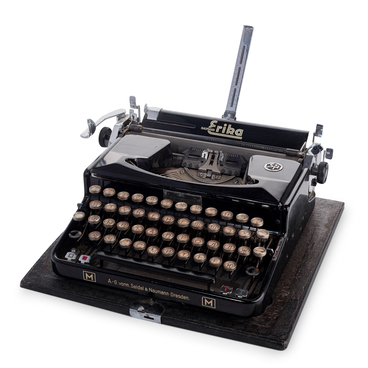The portrait of Vitaly Zakrutkin was made of various types of wood for the writer’s anniversary. The gift from the residents of the city of Shakhty was solemnly presented to Zakrutkin by the first secretary of the Communist Party of the Soviet Union City Committee.
This portrait is an example of wood inlay — a unique form of decorative and applied art that resembles a mosaic or ornament made from various materials. The complexity of this technique lies in embedding a pre-prepared figurine made from a different material into the surface of the object being decorated. The inlaid elements do not protrude; instead, they form a cohesive, integral structure. This particular portrait brought joy to Vitaly Zakrutkin on his birthday.
The writer and war veteran was frequently invited to the city of Shakhty to meet with students and celebrate events such as the Great Victory and Miner’s Day. He also participated in inaugurating streets and new schools. This is evidenced by photographs and various souvenirs that highlight the work and achievements of the miners.
Zakrutkin was always proud of the achievements of the Don miners, often comparing their work to battles on the front lines. He shared the history of miners’ contributions during various periods, including wartime, with schoolchildren. He consistently reminded them that many Heroes of Socialist Labor resided in Shakhty, including a notable female miner, Nadezhda Ivanovna Grigorenko.
Among those heroes was Mikhail Chikh, a participant in the Great Patriotic War, who was awarded the title of Hero of Socialist Labor twice, along with the Order of the Red Star and the Medal “For Courage” for his military merits. In peacetime, he led a mining brigade that became the first in the Don region to achieve a “million” status, winning the All-Union competition for producing over a million tons of coal a year. For his outstanding achievements, Chikh was recognized as a full cavalier of the “Miner’s Glory” badge. Vitaly Zakrutkin celebrated Chikh’s heroic contributions in the mining industry through publications in regional and central newspapers, emphasizing that “such people should be an example for all of us, and especially for the youth.“
Many miners became friends with the writer and
visited him at his house. They loved to walk around the spacious courtyard and
swim in the Don.


